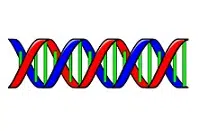In order to know the meaning of the term phenotype, it is necessary, first of all, to discover its etymological origin. In this case, we can state that it is a word that derives from Greek, since it is the result of the sum of two of said language:
-The verb “phainein”, which can be translated as “show” or “appear”.
-The noun “typos”, which is equivalent to “brand” or “footprint”.
The variable expression of a genotype in a certain environment is called a phenotype.
 As can be seen, it is essential to define genotype before moving forward with the concept of phenotype. The genotype is made up of all the genes of an individual according to their allelic composition (that is, according to the different forms that a gene can take when located in the same place on homologous chromosomes).
As can be seen, it is essential to define genotype before moving forward with the concept of phenotype. The genotype is made up of all the genes of an individual according to their allelic composition (that is, according to the different forms that a gene can take when located in the same place on homologous chromosomes).
The phenotype involves the manifestation of this genotype depending on the environment . The traits expressed by the phenotype are behavioral and physical and even go beyond what is visible, since there are phenotypic characteristics that cannot be seen.
The observable traits of an individual, in short, are part of their phenotype. These are manifestations of hereditary content that have undergone certain changes due to the influence of the environment .
It can be said that the phenotype derives from the interaction between the genotype and the environment . Another way of understanding the notion involves thinking of the phenotype as the material manifestation of the genotype in a certain environment .
It is important to be clear, however, that the phenotype, although it is made up of the genetic traits of an individual, can change throughout the individual's life. Thus, for example, a person may have a white skin color because it was determined that way, however, this will change if, for example, they live in countries where there is a lot of sun, drink a lot of sun, or eat foods that alter the color of their skin. your skin.
The link between genotype and phenotype is complex because it is crossed by the interactions that genes develop and the relationships established by alleles within the same gene. That is why the phenotype is not only given by the state or characteristics of the genes: it is also influenced by the sequence of environments that the genotype goes through while it develops.
In the same way, we cannot ignore the existence of another term that uses the word at hand now. We are referring to the Bombay phenotype, which is used to refer to a type of blood that has the particularity of being very rare. Because? Basically because it does not have antigens from membrane A or membrane B in what are called erythrocytes.
Regarding the aforementioned blood phenotype that we are addressing, it can also be indicated that the gene that regulates it is found on chromosome number 19.
